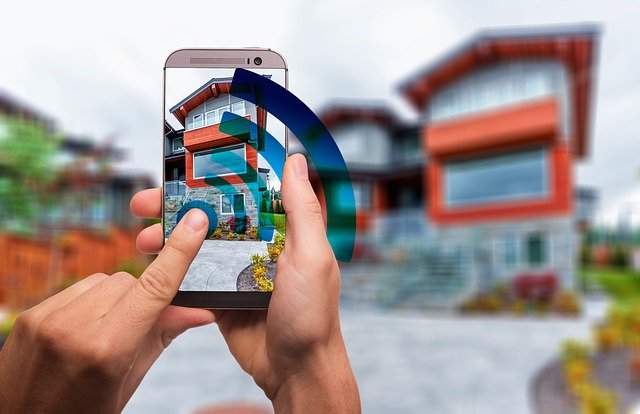HOME IMPROVEMENT
Intelligent Home Security Systems By Wet2Dry Solutions Pvt Ltd Waterproofing Contractor in Bangalore


Smart homes can be achieved can by the help of internet if things which allows to use your smartphone and an app to manage your door locks, lights, thermostats, vacuums, lawnmowers, and even pet feeding. It’s has made it simple (and quite inexpensive) to keep an eye on your house from almost anywhere. Intelligent security systems are extremely adaptable and may be purchased as DIY kits or as full-fledged installations with expert installation and monitoring.
Depending on your preferences, you may choose for a self-monitoring system or pay a monthly fee to have your house monitored 24 hours a day, seven days a week by specialists who will help in notifying your local fire and police agencies when alarms are activated. When you’re gone on vacation, you may even use on-demand monitoring services. Naturally, the higher the coverage you have, the higher are your premiums will be.
Let’s say you’re not yet ready for a solid security system. In such scenarios, there are a variety of individual gadgets, including as indoor and outdoor security cameras, video doorbells, motion sensors, and clever locks, which will help you in keeping watch over your home through your phone or tablet.
Streamlining Security and Home Automation
An intelligent home surveillance system connects to your Wi-Fi network, able to monitor and operate your surveillance systems using your smartphone and an app. A hub that connects with these devices via one or more wireless protocols like as Wi-Fi, Z-Wave, Zigbee, or a custom mesh network is commonly included in entry-level systems. You may expand your system to incorporate door locks, garage door openers, interior and outdoor surveillance cameras, lighting, sirens, smoke/CO detectors, water sensors, and more.
A note on wireless protocols: In an ideal world, all home security components would communicate with the central hub using the same wireless standard, but variables like power consumption, signal range, pricing, and size make it nearly difficult to choose just one.
Smaller components like door/window sensors, for example, often employ Z-Wave or Zigbee technology since they don’t require much power and can be powered by smaller batteries. They can also assist increase the range of networked devices by operating in a mesh architecture. Neither protocol, however, offers the same amount of bandwidth as Wi-Fi, which is why it’s commonly employed in security cameras to give seamless video streaming and other devices that require a large pipe. Furthermore, a hub is required to connect and operate Z-Wave and Zigbee devices, whereas Wi-Fi devices may be linked directly to your home network and controlled via an app. Finally, Z-Wave and Zigbee devices employ AES 128 encryption, and they provide better security than Wi-Fi devices since they function in a closed system with a dedicated hub.
Any intelligent security system worth its salt has components that function together in a unified environment and can be controlled using bespoke rules. For instance, you can programme lights to turn on when motion is detected, doors to unlock when a smoke alarm sounds, and a camera to start recording when a sensor is activated. Some systems keep recorded video on an SD card or a solid-state drive, while others use the cloud. Locally saved video is the best option for budget-conscious do-it-yourselfers, but you must be careful not to erase films that you might need later. Cloud storage makes it simple to save and access recorded video, but depending on your subscription, it might cost hundreds of dollars each year. Some systems have both cloud and local storage, while others include a dedicated storage drive with DVR capability and time-lapse recording, making it simple to locate a video event that occurred at a certain period of time.
All of the systems we examined had an app that allows you to arm and disarm the system, define rules, add and delete components, and get push notifications when alarms are activated using your smartphone as your command centre. Most programmes allow you to see live and recorded video, lock and unlock doors, change thermostat settings, and create silent alarms. Some applications will even use the GPS services on your phone to automatically arm and disarm the system based on your current position. The most costly systems normally include a wall-mounted panel that serves as a communications hub and has a touch-screen display that allows you to perform all of the functions of the app. When an alarm is activated, the display allows you to speak with a professional monitoring service and see video from any installed security cameras.
DIY Home Security Systems
Budget buyers will like do-it-yourself security solutions since they may save them a lot of money on installation and subscription costs. Most DIY systems are simple to set up and come in kits that you may customise to meet your unique requirements. You may buy extra sensors and other components whenever you want and couple them with the system in minutes as your needs change.
Your basic entry-level DIY system may only handle one or two wireless protocols, and add-on components are frequently limited. More costly DIY systems, on the other hand, offer a wider range of wireless protocols and are interoperable with a significant number of add-on components. Certain DIY systems are self-monitored, that means you’ll get alerts when devices are triggered, but you’ll have to call the police if there’s a break-in or a fire. Professional monitoring services are increasingly being offered by DIY providers.
Professional Home Security Systems
While many systems employ double-sided tape to affix wireless components, certain high-end systems include capabilities that require expert installation. These full-service systems are often more expensive than DIY systems and include expert monitoring 24 hours a day, seven days a week. Even so, you may be required to sign a multi-year agreement and pay a substantial termination charge if you break it.Those who typically use touch-screen hubs with RF, Wi-Fi, Zigbee, and Z-Wave radios to communicate with and control a variety of components, such as door and window detectors, door locks, glass break detectors, outdoor and indoor camera systems, light switches, motion and water detection systems, smoke/CO alarms, thermostats, video doorbells, and other home automation devices.
When a smoke or intruder alarm is activated on a professionally monitored system, an agent will attempt to contact you via the two-way control panel before dialling your specified phone number. If you do not reply, the agent will dial 911 and an emergency response will be dispatched to your house. With this, you won’t have to raise a finger, professionally installed systems because once you place your purchase, a technician will come to your home, set everything up for you, and explain you how to use it. It’s worth mentioning that in certain places, installing a surveillance system in your home may need getting a permission.
Almost all new DIY and high-end home security systems come with Amazon Alexa, Google Assistant, and, in certain circumstances, Apple Siri voice control, you can unlock doors, alter thermostat settings, open the garage, and activate or disarm your system with a spoken command to a connected device like such a smart speaker. Many also support IFTTT (If Then Then) applets, which initiate actions using triggers from IFTTT-compatible online services and devices. For example, you might programme an applet to turn on a floodlight when a garage door is opened.
Can You Use a Security Camera Instead?
If you live in a quiet small apartment and want to keep an eye on things while you’re away, a security camera can do the job for a fraction of the cost of a full security system. Nearly all freestanding security cameras link to your home’s Wi-Fi so you can monitor what are the activities going on from your phone or tablet, and most feature built-in motion and sound sensors that send push and email notifications when they’re activated. If the camera is near a window, you can generally adjust the motion sensitivity to avoid false alarms dur to pet activity or passing automobiles, and you can set up a schedule to turn the sensors on and off at specific times of the day.
Some of the more costly cameras have humidity and temperature sensors, as well as the ability to communicate with other connected home equipment like thermostats and smart lighting systems. Find a camera with an SD card slot that allows you to record video when any motion or sound is detected so that you can save money, but bear in mind that your recordings will be overwritten if you don’t save them. Look for a camera that has a cloud storage subscription as an alternative.
Keep an eye on what’s going on outside your house with an outside camera. These devices are waterproof and normally require electricity from a nearby GFCI (ground fault circuit interrupter) outlet, however there are also battery-powered variants available. Outdoor cameras, like their interior counterparts, link to your Wi-Fi network and let you see live video from your phone. They’re quite simple to install, but if you’re not experienced with electrical wiring, you might want to hire a professional electrician. Before wiring make sure the wall is waterproofed by waterproofing services in Hyderabad.
For event-triggered video, motion detection with push and email notifications, night vision, and cloud storage are all available standard features on most exterior cameras, and some even serve as floodlights or porch lights. Some types are capable of distinguishing between a passing automobile, an animal, and a human. Look for an outside camera that can work with other smart home devices like garage door openers, external sirens, and smart switches.
Can Home Security Systems Be Hacked?
Intelligent home security systems, like any other device that connects to the internet and employs wireless technology, are vulnerable to hackers, especially if they lack encryption. Hackers can use a laptop and software to capture wireless signals from your system, allowing them to silence alarms and disable sensors from outside your house. Hackers can use other devices to create radio noise, which can disrupt communications between the sensors and the hub.
Furthermore, Wi-Fi-connected devices, such as security cameras and smart door locks, can be hacked to obtain access to your home network. A competent hacker can then use your Wi-Fi devices and other network resources to launch DDoS attacks on larger networks using your Wi-Fi devices and other network resources. The prospect of someone else seeing video from your inside and exterior security cameras is maybe even more unsettling.
There are a few steps you can do to keep your home security system safe from unwanted cyber invaders. To begin, change the system’s default password to something unique that includes a combination of letters, numbers, and symbols. Update your password on a frequent basis if at all possible. Make sure your home network is secure as well. Check your wireless router’s security settings, and investigate products like the Bitdefender Box 2 that give an extra layer of software protection. Most of the cams are affected due to leakages from the wall and ceiling due to bathroom leakage.
To combat signal jamming, certain security system manufacturers employ frequency hopping technology. Others, on the other hand, employ integrated encryption, but neither feature is conventional, so if you need an extra layer of protection, check with the manufacturer.
Check the records from your camera systems to see if they’ve been accessed. If you witness camera activity at strange hours or when you know no one is home, it might be a sign that your security system has been compromised. Furthermore, make sure that at least of your linked devices and system software are recent. Firmware updates are often released to fix security concerns and safeguard your machine from intruders.
About Wet2Dry Solutions Pvt Ltd Waterproofing Contractor in Bangalore
Website:
https://wet2drysolution.com/
Address:
Ravindra. No 15.HBL Homes Behind Sai Krupa Apartment LaxminarayanTemple Road Munnekolala MarthahaliBangalore, Karnataka 560037
Number:
9552664343
Email:
Map:


